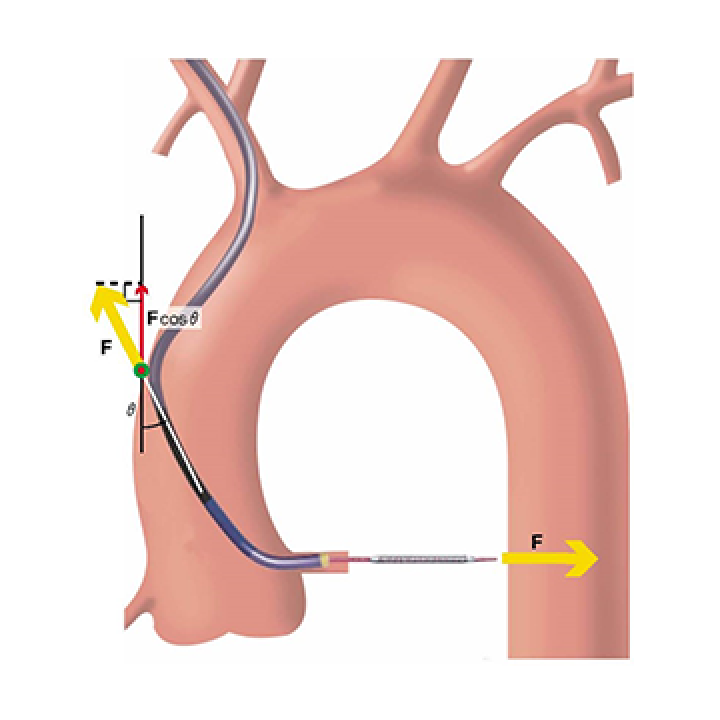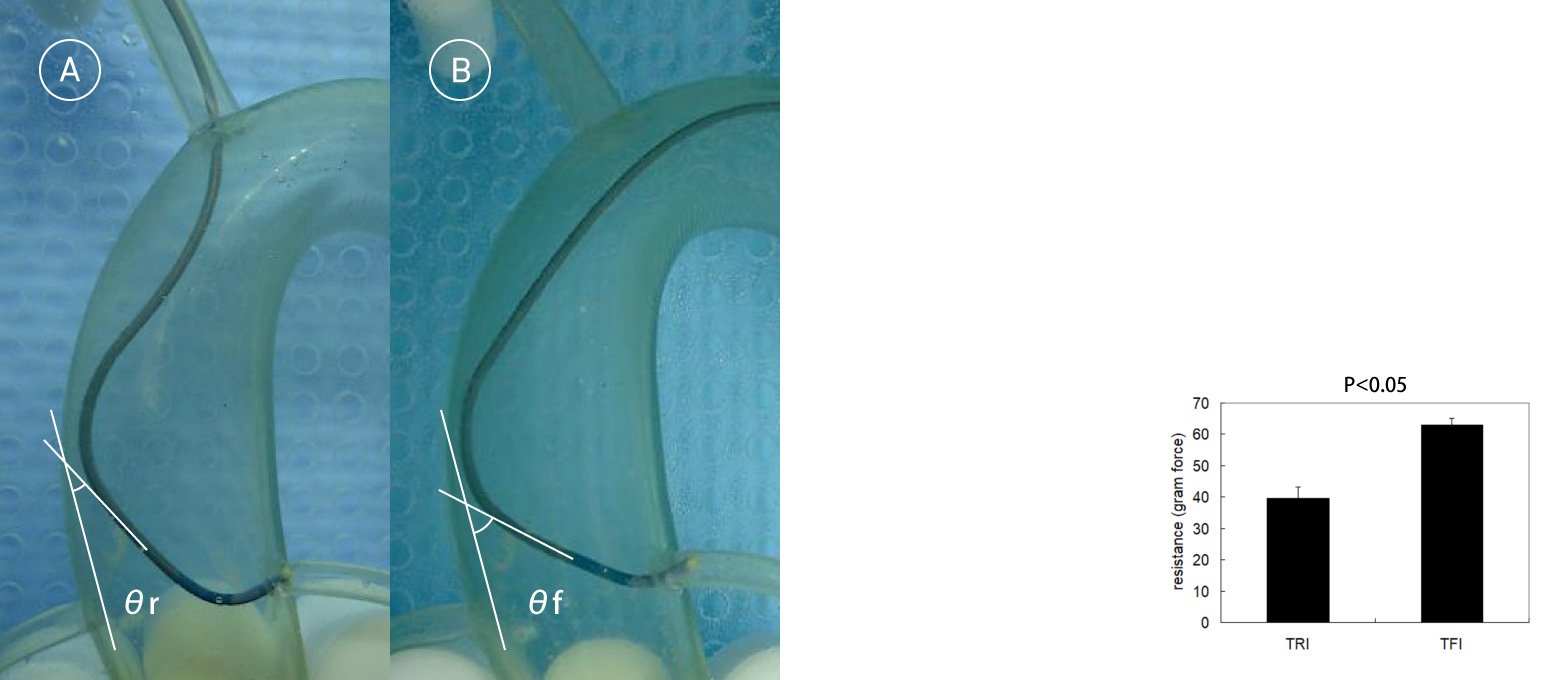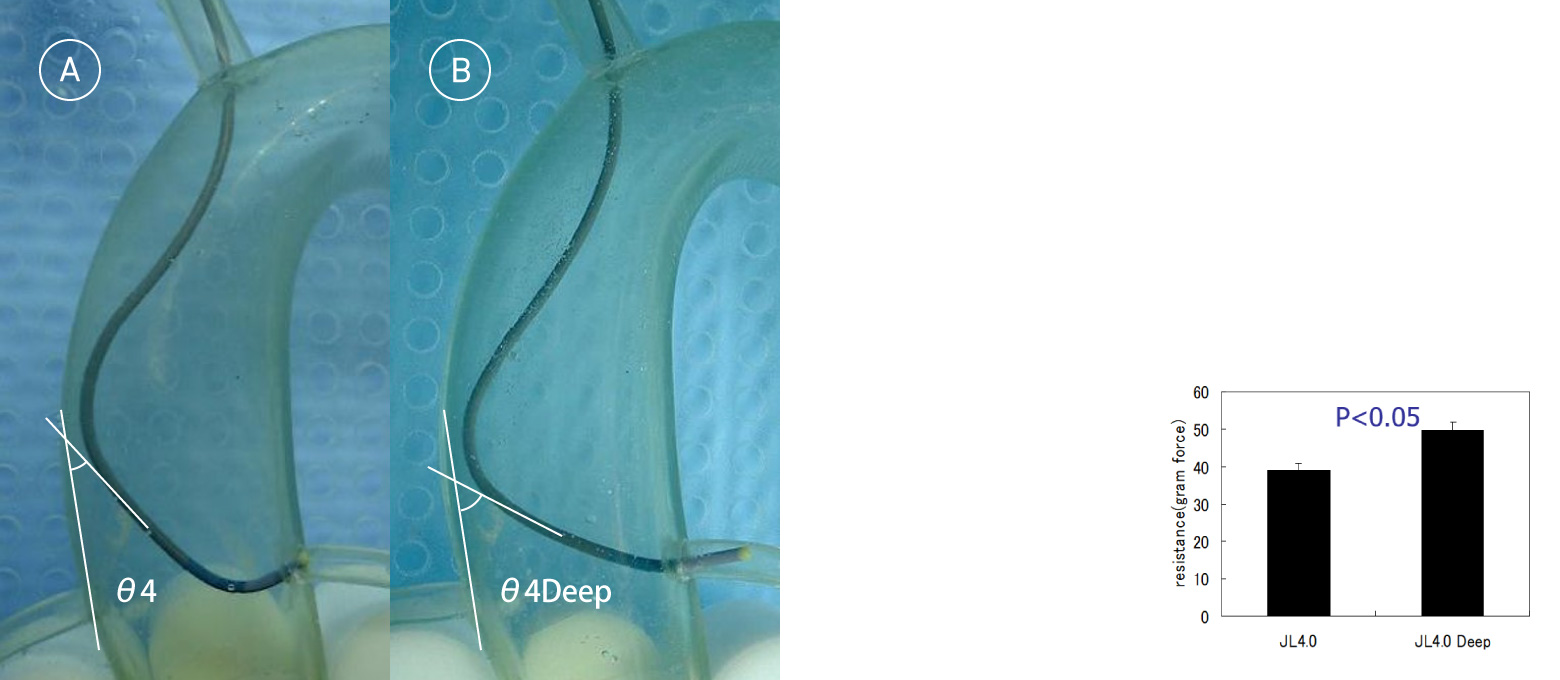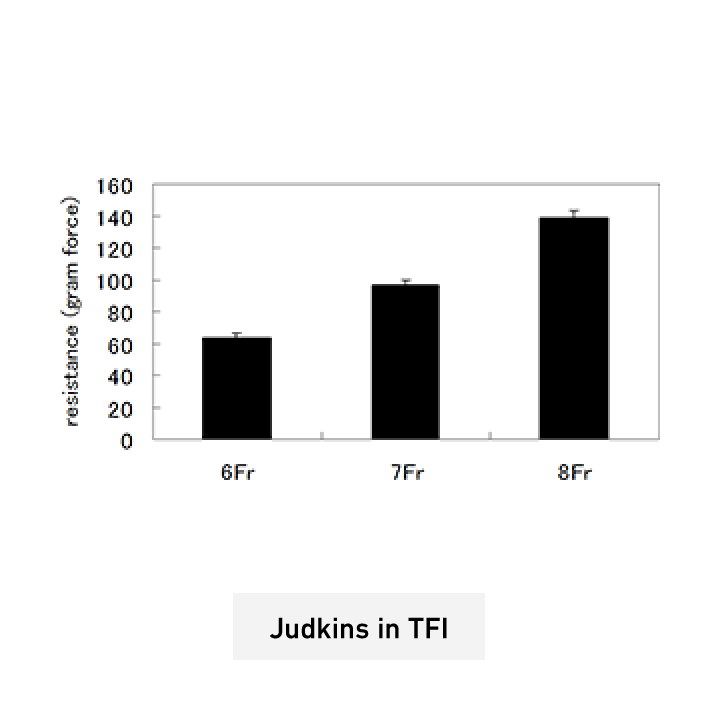IKARI curve
IKARI curve
Physics of Backup Force
IKARI curve
Physics of Backup Force
 "F" is the force necessary for a device to pass a tight lesion and "θ" is the angle between the guiding catheter and the reverse side of the aorta. Fcosθ is the vertical vector of F that makes the guiding catheter move upward. When Fcosθ is big,the catheter loses engagement and goes upward. When the angle θ is equal to 90 degree, the catheter is stable and backup force is maximum.
"F" is the force necessary for a device to pass a tight lesion and "θ" is the angle between the guiding catheter and the reverse side of the aorta. Fcosθ is the vertical vector of F that makes the guiding catheter move upward. When Fcosθ is big,the catheter loses engagement and goes upward. When the angle θ is equal to 90 degree, the catheter is stable and backup force is maximum.

Judkins L is used in radial access (A) and in femoral access (B). These are actually the same catheters. However, the angle θ between the catheter and the reverse side of the aorta is different. Because the angle θ is smaller in radial access, backup force is weaker in Judkins catheter.
Ikari et al. J Invasive Cardiol 2005 ;17:636-41

Deep engagement is a well-known method to increase backup force. However, the mechanism has been unknown. The reason is the angle between the catheter and the reverse side of the aorta. The angle becomes bigger when the catheter is deeply engaged.
Ikari et al. J Invasive Cardiol 2005 ;17:636-41

Friction force between the catheter and the aorta has effects on backup force.
Ikari et al. J Invasive Cardiol 2005 ;17:636-41
 Catheter size is a great factor for the backup force. The bigger catheter has greater backup force.
Catheter size is a great factor for the backup force. The bigger catheter has greater backup force.
Mechanics of backup force
Catheter size
Catheter shape
- Angle between the catheter and the reverse side of the aorta
- Friction between the catheter and the aorta

Ikari L in radial access (Right panel) has greater angle and greater backup force compared with Judkins L in femoral access (Center panel) or in radial acces (Left panel)

